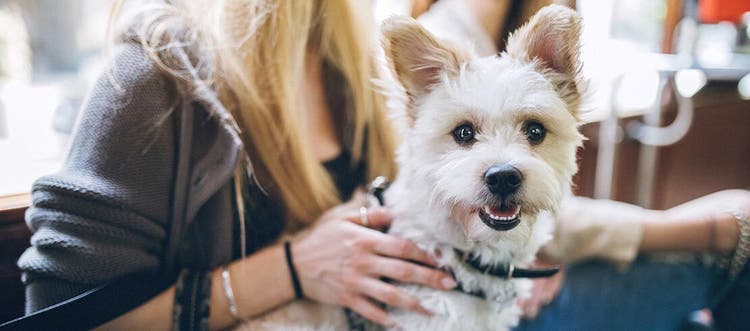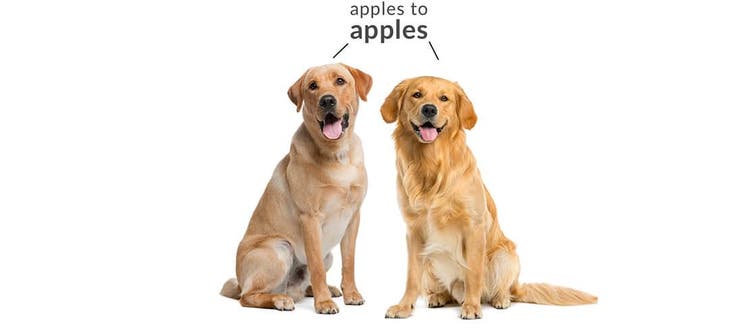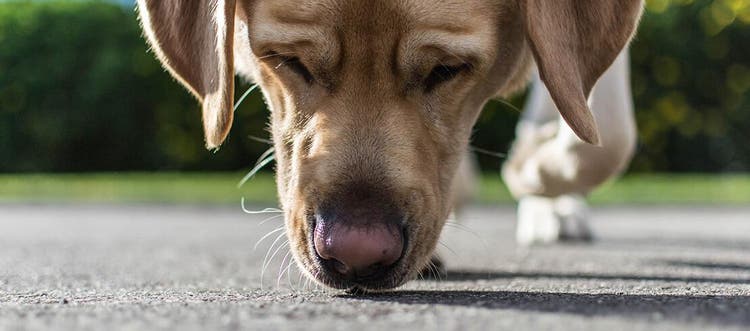Reviewed by Dr Abbie Lam DVM
Some dogs can become nervous and anxious when separated from their owners. Learn how to recognise the signs of separation anxiety in dogs – and how to relieve their stress.
Most dogs are comfortable on their own, but some become distressed in their owner’s absence, a condition known as separation anxiety.
Signs of dog separation anxiety
Signs of separation anxiety in dogs when they are alone range from the obvious to the less apparent.
- Having accidents indoors
- Destructive behaviour: chewing on furniture, frantic scratching on doors or walls
- Self-harm: pulling out fur, scratching skin
- Drooling or excessive panting
- Barking for prolonged periods of time
- Howling
- Whimpering
- Pacing
Ask your neighbours if they hear barking or other signs of distress coming from your dog. This may prove timely in averting any complaints from them. Assure your neighbours you are taking steps to alleviate your dog’s anxiety (and theirs!).
Signs of separation anxiety can even be evident when you are at home, for example:
- Following you around from room to room
- Seeking lots of physical contact and attention
- Becoming quiet and withdrawn as you prepare to leave
How to help your dog cope with separation anxiety
If your dog displays signs of separation anxiety, you need to deal with the problem before it becomes chronic. These strategies will help ease your dog’s fears.
Strategy 1: Build your dog’s tolerance for ‘alone time’
The simplest approach to tackling dog separation anxiety is to gradually increase the time your dog is left alone, simply by moving to another room and closing or partially closing the door.
First, relax your dog by petting them and speaking soothingly, but never expressly tell them “I’m going now”. Leave for a very short period of time. If possible, wait until your dog is silent before you return to the room. Do not fuss over them when returning, however reward your dog with gentle praise and perhaps a treat – but only after they have quietened down.
This will show your dog that being alone is not unpleasant. Make your dog’s alone time as positive as possible – leave them a favourite toy or a long-lasting treat in a space they feel comfortable in.
Gradually increase the amount of time you’re separated from your dog – work up from a few seconds to a couple of hours. It’s best to do this training once a day, rather than several times a day, to minimise stress on your dog.
Good to know: This process may take a few weeks before you see an effect. Patience and consistency is key!
This is best done when your puppy is young and they are more adaptable to training. As soon as you begin puppy training, start leaving them in a safe place for a few seconds to get them used to being alone.
Strategy 2: Foster your dog’s independence
If your dog becomes anxious when you prepare to leave home – as you pick up your keys or put on your coat – you will need to encourage your dog to be more independent. Here are some tips:
- Don’t make a big deal out of leaving the house – make sure your dog is in a safe place and then grab your keys and coat
- Demonstrate that you’re focused on other tasks, and don’t react when your dog brings toys or attempts to gain your attention
- If your dog begins to naturally seek out alone time, reward that behaviour with a treat and some praise
Strategy 3: Use a crate
Crate training can also be useful for preventing separation anxiety. Dogs are den animals, and teaching them that their crate is a safe place to retreat to when alone can help keep them calm – and prevent them from destroying your house!
The key to crate training is to make the crate a wholly positive experience. Your dog should come to think of their crate as their own little haven. Furnish the crate with beloved toys and cosy bedding. You could even put an old piece of your clothing in the crate so your dog has your comforting smell nearby.
Leave the crate door open the first few times so your dog doesn’t become anxious and learns to associate the crate with positive feelings. And of course, there’s nothing most dogs find more positive than food, so give them treats inside their crate whenever they lie inside quietly. You can even give them dinner inside their crate.
Slowly build up time with the door closed (again using treats as positive reinforcement) until your dog is happy spending time there.
Make sure you encourage your dog to use the crate when you are in the house, too – it should not only be associated with alone time. When your dog is alone in the house, leave the door of the crate open so they can wander inside as they please.
Set up for success: Ensure your dog has been out for exercise, goes to the toilet and has something to eat before you leave the house.
Remember that a dog that makes excessive noise when you’re leaving is not being naughty or trying to manipulate you – they’re genuinely upset. Any form of punishment will only reinforce the problem. If, when you return home, you see your dog has had an accident inside or caused damage, don’t punish them or this will exacerbate their anxiety.
You’ll need plenty of patience to tackle separation anxiety. However, if you’re not seeing progress within a few months, you may need to be referred to seek help from a qualified veterinarian that had special training in animal behaviour. These experts can assess your dog’s personality, breed traits and lifestyle, and can offer additional help and advice If you’re concerned about your dogs anxiety, speak to your veterinarian.






